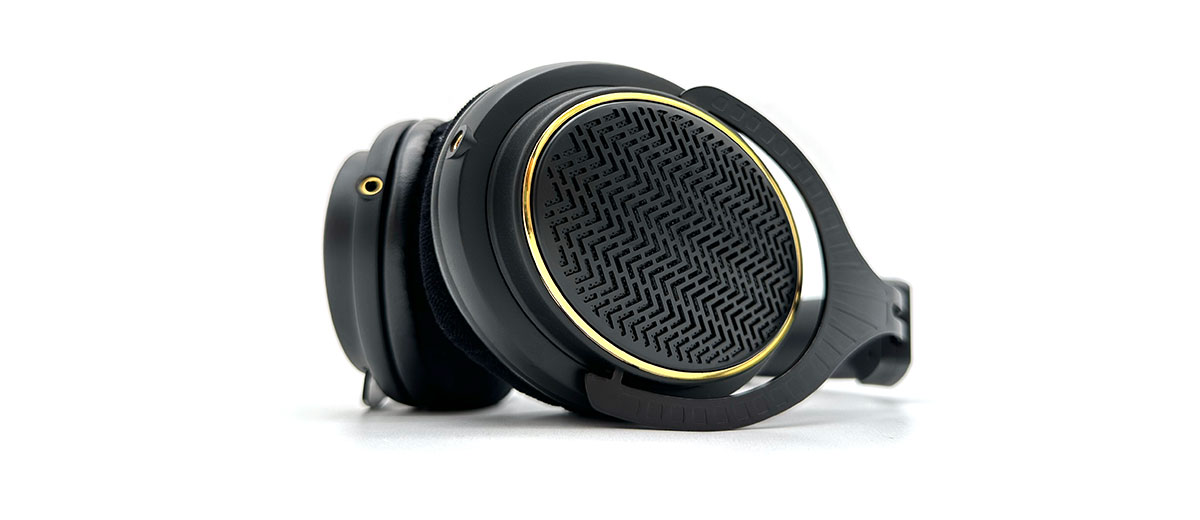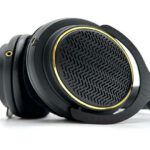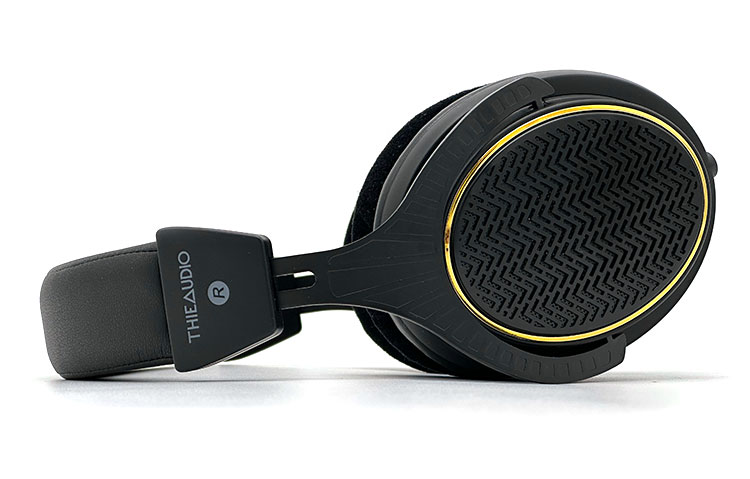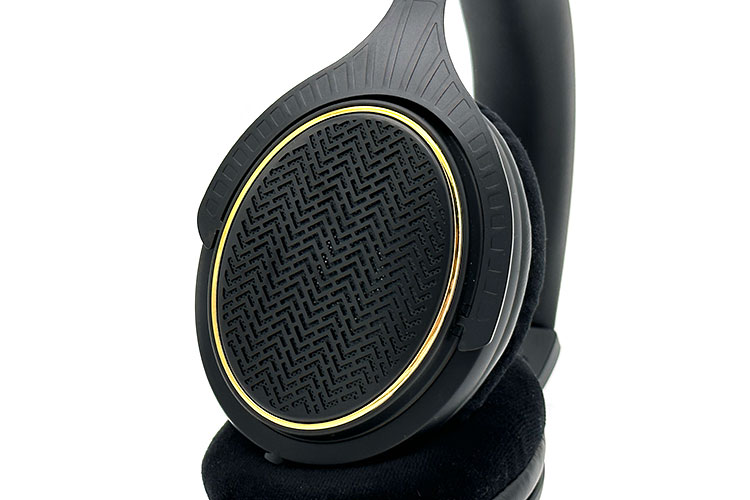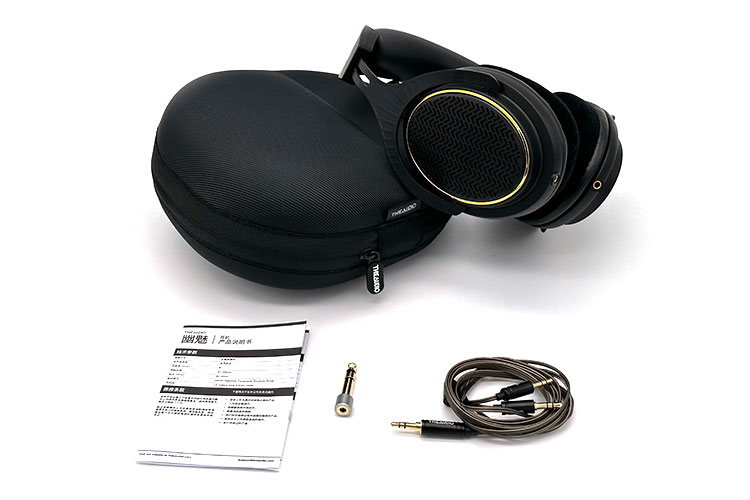In this feature, we review the Thieaudio Ghost, which is an affordable open-back 40mm sapphire diaphragm dynamic driver headphone. It is priced at $129.
Disclaimer: This is a sample in exchange for our honest opinion. Headfonics is an independent website that does not have any affiliate links or status. We thank Linsoul for this opportunity.
To read more about Thieaudio products we have previously covered on Headfonics please click here.
Note, that this article follows our latest scoring guidelines which you can read up on here.
Thieaudio has taken its time to finally announce the revival of its headphone line which you can read more about in our recently reviewed Wraith. It will set you back a little over 500 bucks, but that pair is not only fitted with exquisite planar drivers it is also built like a tank.
Thankfully, we don’t have to wait that long for their next ‘big’ release, because ignoring their usual IEMs, it has only been a few months since the Wraith and we now meet the Ghost.
It does follow the same ominous naming pattern as its two siblings even though its looks and driver tech set itself apart. This one is for sure something they’ll remember in the years to come as their first dynamic driver headphones.
I don’t know if having a dynamic driver is the reason why the Ghost had a considerable chunk of the price dropped compared with the Wraith. It can’t be ignored though that Thieaudio will be winning points by lowering the barrier of entry, but only if it is up to the task.
Tech Highlights
Much of what you’ll find online about Thieaudio’s newly announced pair of headphones is about its 40mm custom-made sapphire dynamic drivers.
The excitement is expected since not only are these drivers developed unique to the company, but it is also the first to deviate from the planar tech used in the company’s two other pairs of cans.
Coined from it using polymer ceramic oxide and titanium alloy metal, the ‘cermet’ sheets making up the diaphragm of the Ghost are meant to impress. A magnetic sputtering process allows the layers to evenly adhere to the surface exactly up to spec.
Immediately after learning about the makeup of the drivers, I was then greeted with several tests showing the critical advantage of why they went through the effort.
Without getting too technical, they showed measurements of the diaphragm’s density, stiffness, and so on to show it is better with some characteristics of nickel and graphene-plated designs.
The whole package is calibrated using Thieaudio’s new definition of tonal balance, meaning, the open-back nature of the Ghost is not without logic. To control pressure across the membrane, the acoustic airflow and acoustic cavity of the Ghost have also been tweaked.
Design
Compared with the Phantom and the Wraith, Thieaudio went a bit more traditional with the Ghost. And I don’t know if it’s intentional but the Ghost shares a familiar impression with Shure’s much more expensive set, the SRH1840.
That inch-thick headband on the Ghost has loads of foam that compress down to a few millimeters where the spring steel can be felt. The pleather is kept plain and instead of bearing a logo it is found on the plastic clamps on either end.
The fork is made of a single piece of metal but since it also acts as the sliding mechanism to adjust the size of the Ghost, Thieaudio, unfortunately, went with no front-to-rear swivel feature. At least it can pivot vertically even though it is limited to a few degrees of freedom.
Finally checking out the cups, I cannot see the drivers clearly through the punched holes and alternating arrow design of the grill. A non-issue really since the grills are what makes the Ghost stand out from the pack.
Now, Thieaudio themselves recommends swapping the default velour pads to thicker ones for more bass response. This fact shows the versatility of a removable earpad design. It is curious though that the manual says the pads are Velcroed but the actual set has a lip where the pads can slide into.
Comfort
One of the first things I noticed with the Ghost is that it reduces outside noise a bit. The grills are completely open but the tuning materials Thieaudio used probably control sound coming in.
And then there’s the clamp that embraced my large head with authority. Not overreaching the point of discomfort, I am always assured even with sudden head movements that the Ghost will stay on.
Having a proper spring steel as part of the system is a lot more comfortable than the stiff clamp of some Sennheiser headphones I’ve tried that relies upon plastic. Also, the padding on both the headband and earpads is quite ample to keep the pressure even.
Your experience may differ from mine, but to my ears, the earpads are a bit cramped inside. Ever so slightly, my ears graze the mesh of the pads plus the top and bottom area.
Stock Cable
There is only one 1.2m single-ended cable that comes with every Ghost purchase even though the headphones are balanced-capable.
I can somehow relate that the flat ribbon cable used has the same classic vibe as the headphones and also gives it a rather unique styling. It still makes me scratch my head since its shiny retro look seems to loosen the tightly-themed aesthetic.
Going back, the short cable is perfectly cut for use on the move and it also has negligible microphonics for when it brushes against the clothes or skin. It’s one of the few default cables I’ve tried that doesn’t need me to stay still to avoid irritating background noise.
What it doesn’t have complete control of is that whenever I physically give it a kink, it won’t go back to its original form completely. Let it hang for a while nevertheless and it will straighten up by itself.
Packaging & Accessories
It was the artistic design overlap between the headphones and its name ‘GHOST’ that first got my attention upon seeing the box.
What I realized soon after is that its use of a plum hue to add interest to the rest of the black sleeve and the rather dense weight is the reason why I’m finding it quite luxurious.
There are two main things one can take out of the box after it has been opened. The first is a nimble hard case where the Ghost and accessories dwell and the second is the user manual.
I’d say the case is nice to have for it isn’t bulky like the generic ones you can buy online. Plus, the materials used don’t feel cheap and it also has a gartered net inside to organize accessories like cables.
The headband and earcups of the Ghost are lined with adhesive plastic like the ones you see in brand-new appliances to protect it from scratches just in case. While I don’t know how useful they’ve been during transport, at least they’re as satisfying to peel off as expected.
Sound Impressions
Summary
Putting the Ghost on for the first time, it clicked instantly that the tuning is what will put it on the map. Don’t expect too much in the area of technicalities since it is not its greatest accomplishment and I wished it could have had better dynamics and image separation to start.
The Ghost is a really interesting headphone. I know why many people will like it, and I also have a case for those who will say otherwise.
I’ll explain in the next section the character of the Ghost, but as a summary, it has an easy-to-listen profile that drives the bass hard and plays the upper midrange well which to me is best for casual and non-critical listening.
The Ghost isn’t harsh even when played loudly and is a really good choice for daily listening if the tuning fits the use case.
Timbre
One of the first things that jumped out about the ghost is the thick layer of armor surrounding the main body of a thumping drum. Without really trying to be accurate, it has a refreshingly warm take with bass notes that are both playful and powerful.
It’s a good thing that even with the scale it provides on the low end, it will only busy up the mix if the song itself is partially to blame. Bass lines are present and can be heard but I wouldn’t count on it for critical listening since there are areas that get smoothed over.
Singers will sound intimately close. And you’d think all the subtleties will be there, only, the Ghost is forgiving in this area. A mushy property disconnects lighter parts of a song such as breath and vibrato from the original quality of the vocals.
Instead of details, what makes the Ghost is its capacity to tame the upper shout without losing the sense of attack. A bit friendlier sounding this gives guitars as well some heaviness to not sound tinny and to avoid being unrealistically metallic.
Trying on some brass instruments, a blowing horn is lacking its cheerily bright energy as it gets replaced with a weak aura and stifled edge. The dynamics and upper extension are also lacking to provide a more realistic scale and air.
Staging
Unless played loudly, the stage of the Ghost is not going that far off the edge of the drivers. The stage may be small but it is equipped enough to let important aspects shine.
Staged-out guitars are placed accurately and directionality is easy to understand. It is with subtler chimes that even when there is silence around, I sometimes find it hard to grasp as a solid image which I put some liability to the tuning.
With a familiar song where I know the vocals are staged out a couple of seats forward, the Ghost made it appear that the female singer is right up against my nose or a single step ahead.
The Ghost has a low to average height as shown by a piece of orchestral music. In a more bass-rich scene, the height does improve but the dynamics and separation of a clapping audience are restricted. The lateral imaging is where the Ghost takes back some points.
Click on page 2 below for pairings and our select comparisons.

